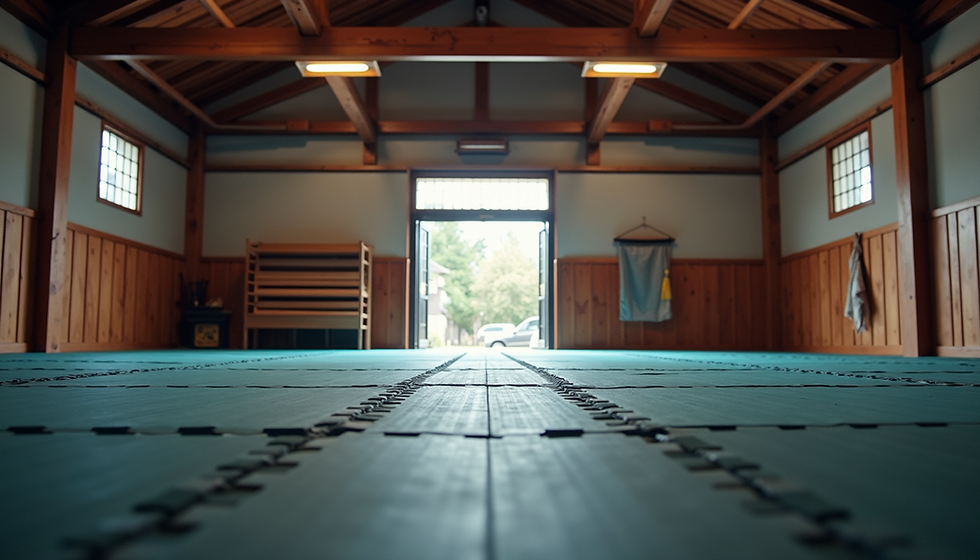Why Your Martial Arts Business Needs Proper Coverage
- psurestart
- Oct 9
- 4 min read
Running a martial arts Club or just because you love to instruct within a small Locally run Club; involves more than just teaching techniques and training students. It requires careful planning and protection against risks that could threaten your livelihood. Proper business insurance is essential to safeguard your investment, reputation, and peace of mind. Without the right coverage, you could face significant financial losses from accidents, injuries, or legal claims.
In this article, we will explore why having the right insurance is crucial for your martial arts business. We will cover the types of coverage you need, how much it might cost, and practical steps to ensure you are fully protected.
Understanding the Importance of Business Insurance for Martial Arts Schools
Martial arts schools face unique risks that other businesses might not encounter. From physical injuries during training to property damage, the potential for claims is high. Business insurance helps you manage these risks by providing financial support when unexpected events occur.
Some key reasons why business insurance is vital to include:
Protecting against injury claims: Visitors/Members of the Public might get injured during classes or events. Insurance covers, medical costs and legal fees if a Public/Professional claims arise.
Covering property damage: Equipment, mats, and your facility can be damaged by accidents or natural disasters.
Safeguarding your income: If your business must close temporarily due to an insured event, insurance can help cover lost income.
Meeting legal requirements: Some regions require businesses to have certain types of insurance to operate legally.
Building trust with clients: Having insurance shows professionalism and commitment to safety.
Without proper coverage, a single lawsuit or accident could lead to severe financial strain or even closure of your martial arts Club/Clubs.

Types of Business Insurance Every Martial Arts School Should Consider
To fully protect your martial arts business, you need a combination of insurance policies tailored to your specific risks. Here are the most important types to consider:
Public Liability Insurance
This covers claims made by third parties for injuries or property damage caused by your business activities. For example, if a student slips and injures themselves during a class, this insurance helps cover medical expenses and legal costs.
Professional Indemnity Insurance
If you provide advice or training that leads to a client’s financial loss or injury, professional indemnity insurance protects you against claims of negligence or mistakes.
Employers’ Liability Insurance
If you employ staff, this insurance is usually a legal requirement. It covers claims from employees who get injured or ill due to their work.
Property Insurance
This protects your physical assets such as your training facility, equipment, and stock against damage or theft.
Business Interruption Insurance
If your business is forced to close temporarily due to an insured event like fire or flood, this insurance helps cover lost income and ongoing expenses.
Equipment Insurance
Martial arts equipment can be expensive. This insurance covers repair or replacement costs if your gear is damaged or stolen, up to stated Policy Limit.
By combining these policies, you create a safety net that protects your business from a wide range of risks.

How much does martial arts instructor insurance cost?
The cost of insurance for martial arts instructors varies depending on several factors:
Type of coverage: More comprehensive policies cost more but provide better protection.
Claims history: A history of claims can increase your premiums.
Number of instructors: More instructors mean higher coverage needs.
On average, martial arts instructor insurance can range from £99.00 (£5ML PL) to £120.00 (£10ML Pl) per year coverage - IMASA Registered Club/Instructor Discounts
IMASA can also supply £1ML & £2ML PL Instructor Policies.
Contact: enquiriesimasa@aol.com
To get the best value, compare quotes from different providers and ensure the policy covers all your specific risks. You might also want to explore specialised options like martialguard insurance, which is designed specifically for martial arts professionals.
Practical Steps to Secure the Right Insurance for Your Martial Arts Business
Getting the right insurance coverage requires careful planning and research. Here are some actionable recommendations:
Assess your risks: Identify the specific risks your business faces, including injury types, property vulnerabilities, and legal requirements.
Consult an insurance expert: Speak with brokers or providers who specialise in martial arts or sports businesses.
Compare policies: Look at coverage limits, exclusions, and premiums to find the best fit.
Review your policy regularly: As your business grows or changes, update your coverage accordingly.
Train your staff: Implement safety protocols to reduce the likelihood of accidents and claims.
Keep detailed records: Document incidents and maintenance to support any future claims.
By following these steps, you can ensure your martial arts business is well protected and compliant with regulations.

Protecting Your Business Reputation and Future Growth
Insurance is not just about managing risks - it also plays a key role in building your business reputation. Clients and partners feel more confident working with a school that takes safety seriously. This can lead to:
Increased enrolments
Better partnerships with local organisations
Opportunities to host larger events or tournaments
Moreover, having proper insurance coverage ensures your business can recover quickly from setbacks. This stability allows you to focus on growth and delivering quality training.
In summary, investing in the right business insurance is a smart decision that protects your financial health, supports your professional image, and helps secure your martial arts business’s future.
Taking the time to understand and obtain the correct insurance coverage is essential for any martial arts business owner. It provides peace of mind and a solid foundation to build a thriving, safe, and respected martial arts school.


Comments